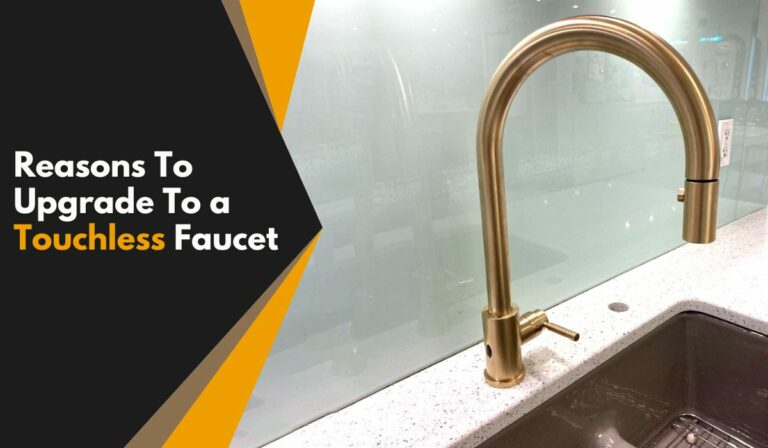How To Fix A Slow Draining Bathtub
A slow draining bathtub isn’t just frustrating, it can quickly turn into a bigger plumbing headache if ignored. Luckily, you don’t have to be a professional plumber to tackle this common issue. Whether your tub fills with water after a shower or drains at a snail’s pace, understanding the root causes and learning the right fix can save you time and money. In this guide, you’ll discover the common culprits behind slow drains, gather the tools you need, and follow a straightforward, step-by-step process to get your bathtub draining smoothly again.
Common Causes Of Slow Draining Bathtubs
Slow draining bathtubs usually boil down to a few typical issues, most of which are easy to spot once you know what to look for. Hair buildup is the number one offender, it easily clogs up the drain, catching soap scum and debris to form a stubborn mass. Another common culprit is soap scum itself, which can solidify and restrict water flow over time. Mineral deposits from hard water also contribute by narrowing the pipe diameter gradually. Occasionally, you might face a clogged or kinked vent pipe that hinders proper drainage, or even an issue with the trap under your tub that needs clearing. Knowing these causes will help you identify the problem more quickly when you start your troubleshooting.
Tools And Materials You’ll Need
Before diving in, gather the right tools to make the job efficient and safe. You’ll want a sturdy plunger designed for sinks or tubs, a drain snake or auger for reaching deeper clogs, and gloves to protect your hands. Household staples like baking soda and white vinegar will come in handy for natural cleaning solutions. In some cases, having chemical drain cleaners might be necessary, but these should be used cautiously. Also, keep a bucket or some towels nearby for any spills or messes. Preparing these tools upfront ensures you’re ready for each step without interruption.
Step-By-Step Guide To Fixing A Slow Drain
Preparing The Area And Ensuring Safety
Start by clearing the area around your bathtub. Remove any bottles, soaps, or mats to prevent accidental spills. Put on rubber gloves to avoid contact with grime and cleaning agents. If you use chemical cleaners later, make sure the room is well-ventilated.
Removing Visible Debris From The Drain
Remove the drain cover carefully, usually held by screws or just snapping off. Use a flashlight to look inside and pull out any visible hair or gunk clinging near the surface. A wire hanger bent into a hook also works well here.
Using A Plunger Effectively
Fill the tub with a few inches of water to cover the plunger’s rim, creating a good seal. Position the plunger over the drain and push down firmly, then pull up sharply without breaking the seal. Repeat several times to dislodge clogs. This works best for blockages near the drain entrance.
Applying A Baking Soda And Vinegar Solution
Pour half a cup of baking soda into the drain, followed by half a cup of white vinegar. You’ll see fizzing as it reacts, this helps break down organic buildup naturally. Let it sit for 15–20 minutes, then flush with hot water. This is a safe, eco-friendly way to tackle mild clogs and freshen your pipes.
Using A Drain Snake Or Auger
If the clog is deeper, feed a drain snake down the pipe slowly, twisting it to grab the blockage. Pull it out carefully along with the debris. Repeat as needed. This tool reaches far beyond what a plunger can, making it excellent for tough or unseen clogs.
When To Use Chemical Drain Cleaners
Chemical cleaners are potent and should be your last resort. Use only as directed on the packaging, wear gloves and eye protection, and never mix chemicals. These products can damage pipes if overused or misapplied and tend to lose effectiveness on severe blockages, so proceed cautiously.
Preventative Maintenance Tips To Avoid Future Clogs
Prevention beats repair, especially when it comes to bathtub drains. Use a drain cover or hair catcher to block hair and debris from entering the pipes. Clean the cover regularly to maintain flow. Avoid pouring oils, thick soaps, or large amounts of shampoo down the drain. Periodically flush your drain with a baking soda and vinegar mix or simply hot water to clear out minor buildups. Also, keep an eye on your water pressure and pipe condition during routine plumbing inspections. These small efforts can save you from slow drains and costly repairs over time.
When To Call A Professional Plumber
Sometimes DIY fixes won’t cut it, and that’s when calling a pro is your best bet. If the drain remains slow after several attempts, or if you notice gurgling sounds, foul odors, or water backing up into other fixtures, it could indicate a deeper plumbing problem. Major blockages, pipe damage, or venting issues require specialized tools and expertise to fix safely. Also, if you’re uncomfortable handling chemical cleaners or complex equipment, or if you spot leaks during your work, don’t hesitate to contact a licensed plumber. Investing in professional help early can prevent worst-case scenarios and costly water damage.
Conclusion
Fixing a slow draining bathtub is often simpler than it seems, starting with identifying common clog sources and arming yourself with the right tools. Following a clear sequence of steps, from removing visible debris to using plungers, natural solutions, and drain snakes, empowers you to restore your bathtub’s drainage quickly. Regular maintenance and mindful use keep your pipes in good shape, reducing future hassles. But remember, knowing when to call in a professional can save you time, stress, and money, ensuring a long-lasting, smoothly flowing bathtub.


